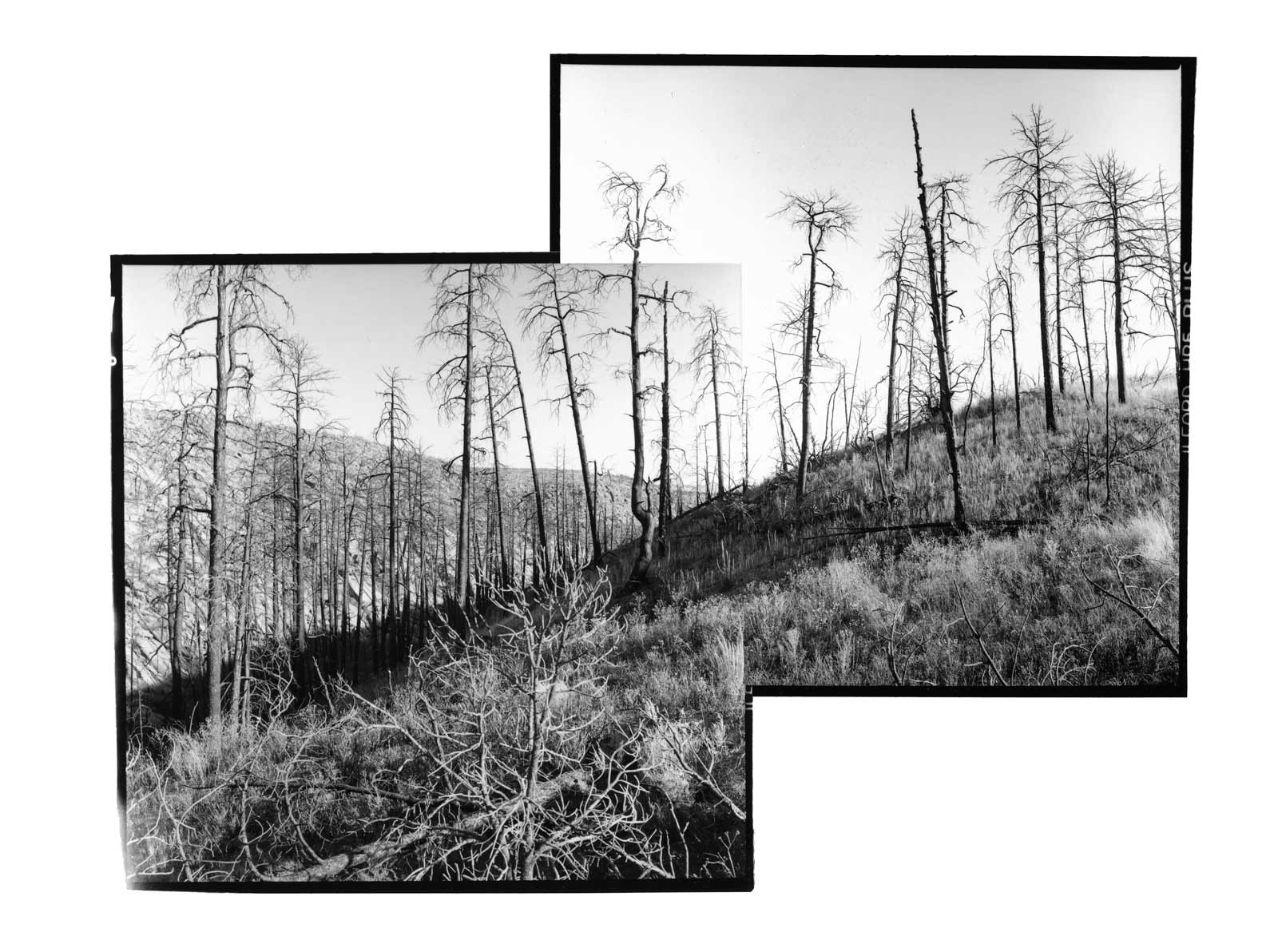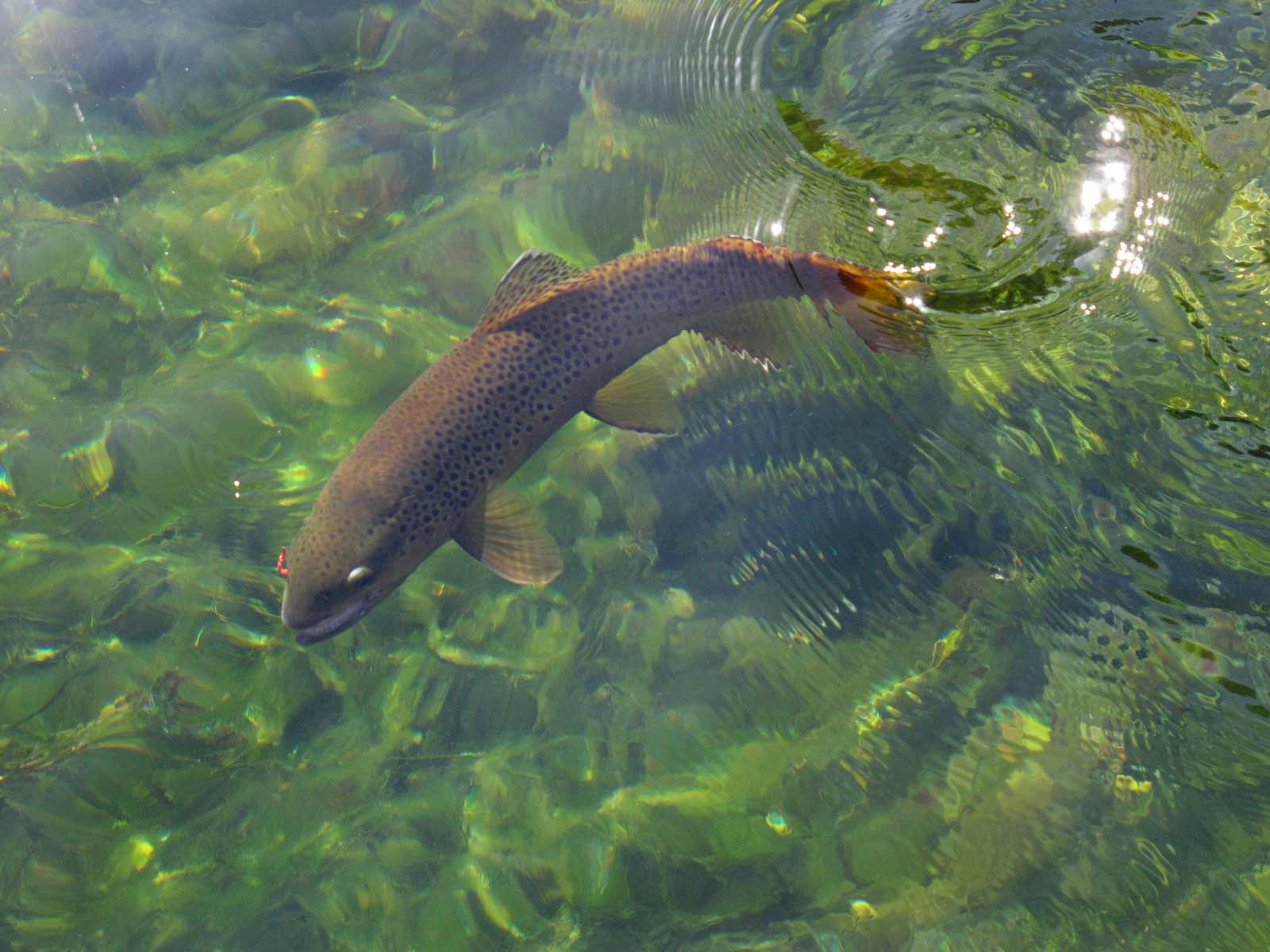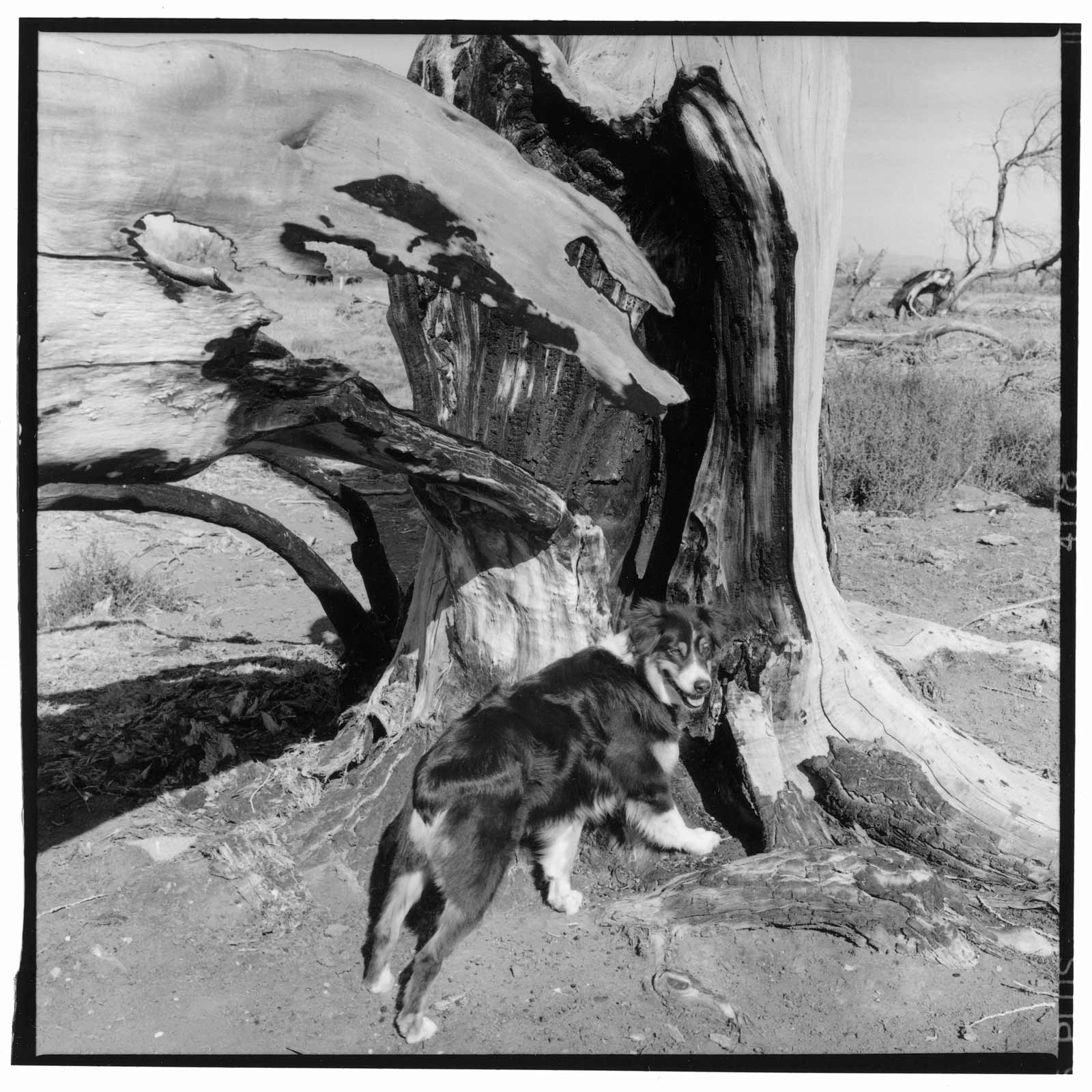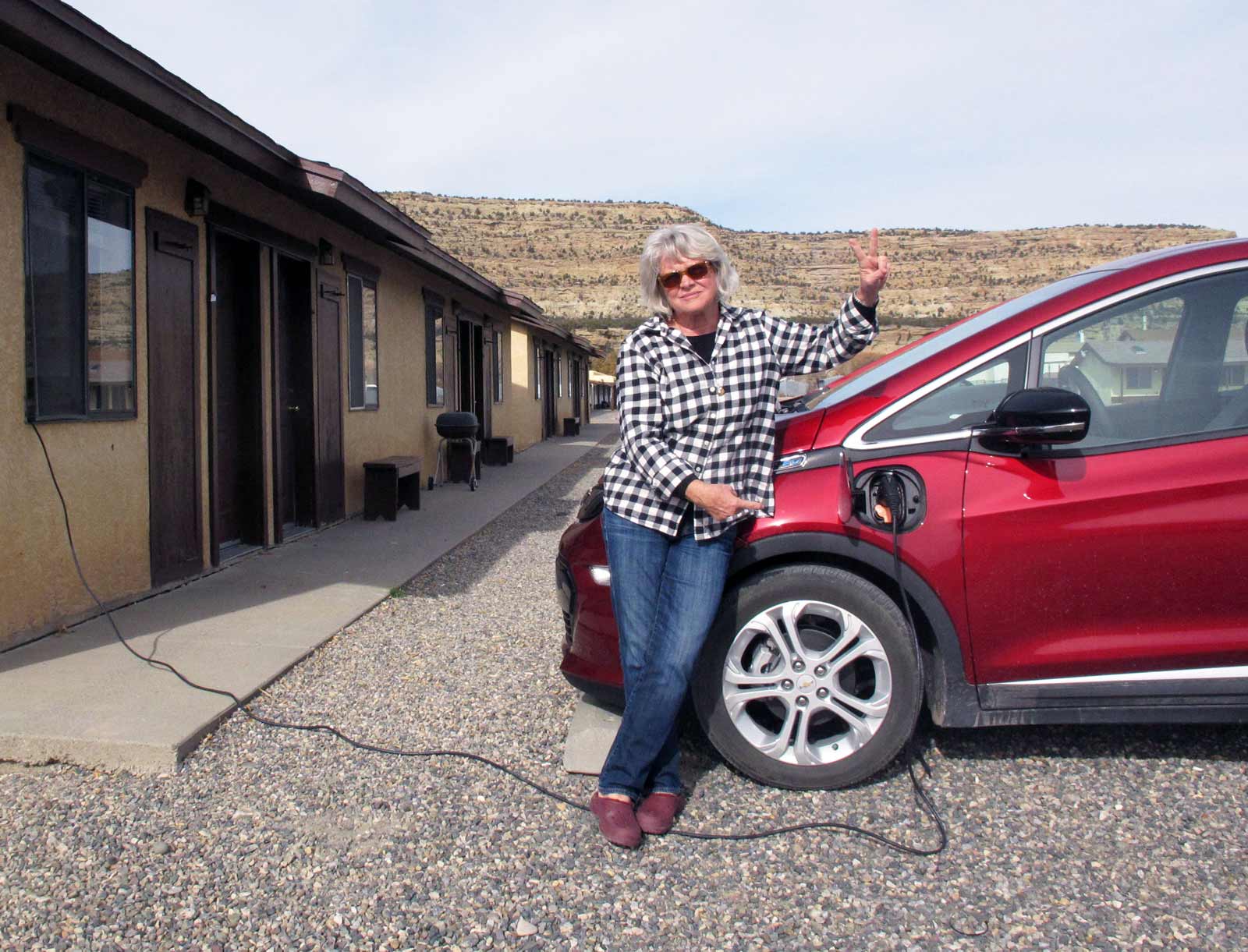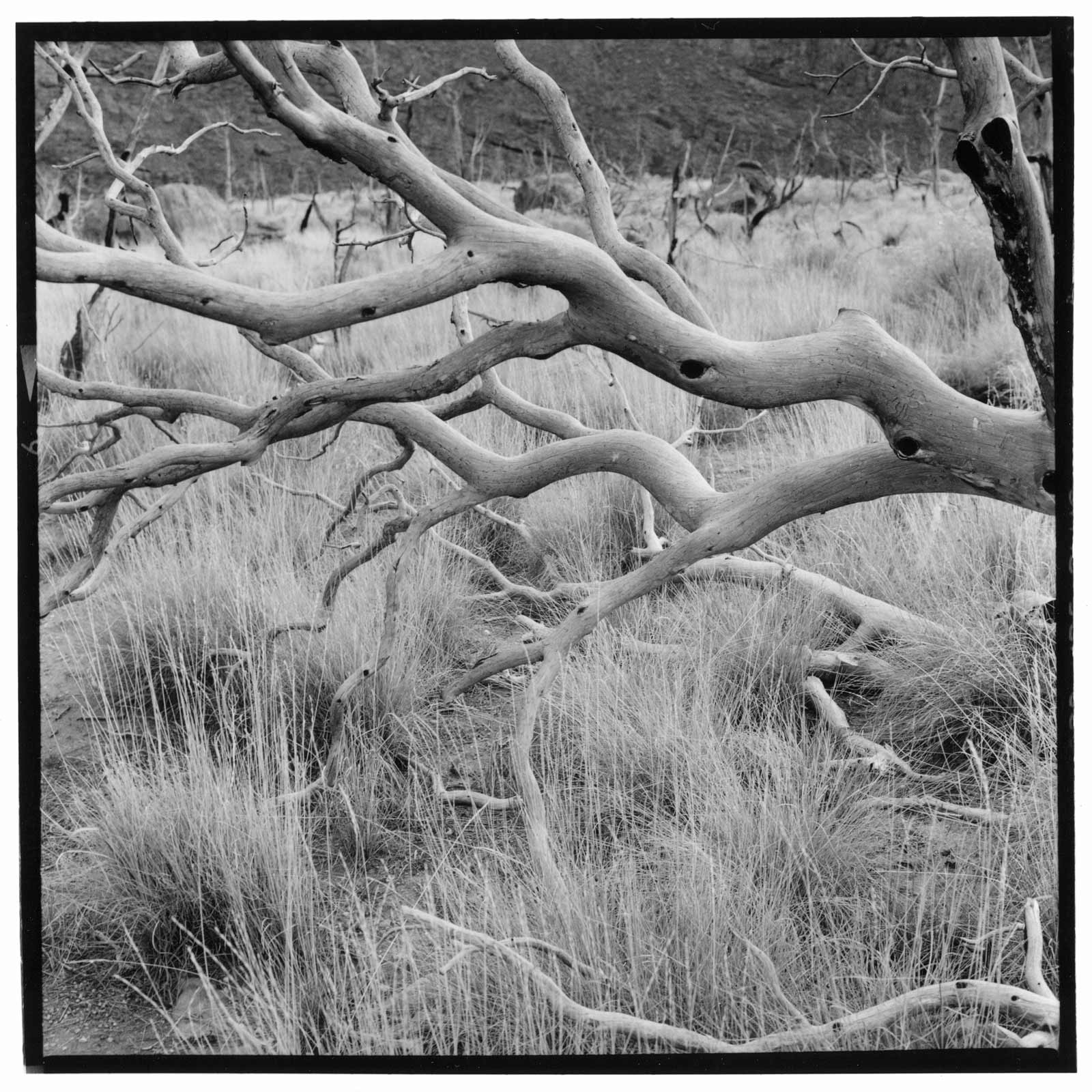There is not much to do in Albuquerque, so what do I do there? The answer is I don’t do anything there. I fish. I used to do this in the Jemez Mountains where the river is a thirty-minute drive from our house. But this summer there wasn’t too much water in the Jemez, and rainbow trout, which are the fish that live in the river, require cold water to survive. A trout cannot digest food—mostly insects and their larva—if the water is above 58 degrees. With the summers being so hot, and the rain in the mountains having virtually stopped, the water in the Jemez river became so diminished and what little there was became so warm that the Game and Fish department stopped stocking the river. Normally, Game and Fish pull up with a small tank truck, the driver gets out, opens the large cap top, like a cap on a Sherman tank, plunges in his long-handled net, and pulls out forty or fifty shiny, squirming fat rainbows, then gently releases them into a pool in the river. I fish near a bridge where they stock and last year I noticed a dead trout floating on the water. I walked down the edge of the stream, only to see more and more large, bleached, bloated fish, a very sad sight. Apparently, the driver had arrived with his tank of healthy, shiny rainbows and dumped them into water so warm that they all went into shock and died.
When the Jemez is unfishable, I fish somewhere else. I fish in one of the great trout streams of North America. I fish in the San Juan. Located in northwestern New Mexico, near the Colorado border, two smaller rivers flow into the San Juan, and in the 1960s the government built a high dam there. On the north side of the dam is Navajo Lake, which can be 150 feet deep behind the dam, and from the bottom of that dam flows the water of the San Juan. Coming from the bottom of the lake the water is a lot colder than 58 degrees. The water of the San Juan is bone-chillingly cold. Trout fishermen stand in it for hours. If you do not have long underwear beneath your waders, and two pairs of socks inside your heavy wading boots, after a few minutes you will be in severe pain.
The San Juan beneath the dam is a braided river, with a main stream, islands, smaller streams breaking off, then reuniting with the main stream. In New Mexico, the hot sun shines on almost every day, and in the edge waters of the river, epic insect hatches take place every day. Black midges emerge as large swarms above the eddies along the side, then break into clusters, and float off into the current. The individual insects are about an eighth of an inch long, and when you sit in the grass at the side of the stream, it’s common to see them crawling over your hands and legs. When the dam was built, it created a perfect trout habitat in the river below. The first three and a half miles are quality waters—you can only use flies with a crushed barb, and you must immediately release every fish you catch alive. The only thing wrong with the San Juan is that it is 175 miles from my house. And our new Bolt, like the Tesla 3, only goes 240 miles, max.
Nancy, my wife, and I were way back in a line of 400,000 people waiting to get the new Tesla 3 when the GM dealer in Albuquerque called. They had received a single Chevy Bolt, GM’s entry into the zero emissions field, priced to match the new Tesla. “I want it,” I said. “I’ll be right there.” “It’s been sold.” “You sold the demo model? You’re supposed to keep it.” One month later, my phone rang again. This time, I was in a hospital, recovering from congestive heart failure. “We have just received another Bolt,” the woman said. “What color is it?” “Cobalt Red.”
“I want it!” I said.
After Nancy uses the car, she comes home and plugs it in, “like a toaster.” If we plan a long trip, we leave it plugged in for two nights and the Bolt is fully charged. Normally, I drive to the San Juan in my old S80 Volvo, with my Australian Shepherd, Trip, as my companion. This time, Nancy said, “If you don’t take the dog, we can take the Bolt.” The bridge across the Rio Grande is about a mile from our house, and from there the road is a straight shot, an eye-popping ride through the desert, only on this trip, it was more of an eye strain. The Jemez, the mountain range close to us, was enveloped in a haze. “Smoke,” said Nancy. Apparently, there was a wildfire, normal now in the summer, and the smoke had drifted into the valley and covered the mountains.
Advertisement
Sixty miles west of the Rio Grande, you reach Cuba, in Sandoval County, the high desert country where the artist Agnes Martin lived in isolation, and a good place to find petrified wood. Cuba is also a speed trap, so Nancy was careful to keep the Bolt at thirty miles per hour until we exited the town. Seventy is the limit on the open roads of New Mexico, so most people cruise just below eighty without fear of the police. As we climbed out of the pinyon trees north of Cuba, and crossed the continental divide at 7,379 feet, we looked north and west and surprisingly couldn’t see anything at all. For years, this is where you could see the Colorado Rockies, a wall of snow-capped peaks, in the bright clear light of summer, reaching 14,000 feet as they ran like a wall along the southern border of that state. This time, there was an impenetrable cloud of gray-brown smoke between us and Colorado. “Probably from California,” said Nancy. After 125 miles, we would reach the San Juan at a bridge in Bloomfield, then make a ninety-degree turn to the east into the green valley created by the river, which that day was free of the dreaded smoke and wind. Powerful winds have always crossed the state in April. Now they come on and off, all summer long.
Our plan was to stop at Abe’s motel, a modest lodging for fisherman, where I usually stayed with my dog. That night, we used the outlet in our room to charge the car for the night, a power cable hanging from the window to the car. But in the morning, there wasn’t enough power to get us home, so the following night we drove to the nearest Tesla charging station, 39.6 miles away in Farmington. But the Tesla plug did not fit the Bolt outlet. Farmington is surrounded by the Navajo and the Ute reservations, and all the employees at the motel were native women. The Navajo woman behind the desk said there was an outdoor socket near the parking lot, and we were welcome to leave our Bolt plugged in there for the night. When we awoke in the morning the battery was half-charged, still not enough to reach home, so we waited. By 1 PM, the battery was three-quarters full and the dashboard calculated that we could travel 185 miles. Bored and restless, I said to Nance, “Let’s go.”
It’s 14.4 miles from Farmington to the turnoff at Bloomfield, where the road enters the desert and heads southeast to our home, and as Nancy drove towards that stoplight, I carefully watched the calculations on the dash. When you step on the pedal, you can watch power discharge from the battery to the turning wheels, and when you take your foot off the pedal, and the car rolls along, you can see the electrical power that the car creates return to the battery. “Nancy,” I said, “the way you’re driving we are not going to make it.”
“Fuck you,” she answered. “You drive.” Whereupon we traded places and I began the 150 miles we had left, across the desert and the San Juan basin, high desert country covering a vast field of oil and natural gas. We rock hound there regularly. On my last trip there, I found a fossilized dinosaur egg. There are quite a few long hills leaving the San Juan Valley, and going south from the Continental Divide, most of them take you down. By pumping the pedal, the Bolt speeds forward, and each time you lift your foot, the speeding car creates electricity that returns to the battery, appearing on the dash as narrow green arrows. By the time we approached Cuba, it looked as though we might make it home.
We had been eyeing a large black cloud to the north, and as we neared Cuba, we saw that we were heading straight into it. Though the summer rains have stopped in the mountains in New Mexico, we now have what is called Monsoon Season. The sky turns gray, then black, and when the clouds burst open, there is a slow-moving release of a tremendous amount of water, sometimes proceeded by hail, on a single small area. And that is exactly what happened as I nursed the Bolt down the highway. I have never liked driving in the rain, but since we’ve lived in Bernalillo that hasn’t been a problem because it never rains. Now, I was watching water flow across the road, and my visibility turned to near zero as I stared through the violently moving wipers. East of San Ysidro, there is a bridge across the Rio Puerco. I think that means Pig River, which is more enticing in Spanish, and there isn’t a river under the bridge, just sand, or what is called an arroyo. They are called wadis in North Africa, and they are the beds of dry rivers that only fill when it rains, which isn’t often.
Advertisement
Now, an enormous amount of water was falling on San Ysidro, and water not only filled the arroyo, it had jumped the banks and was covering the highway, with the few moving trucks in front of me plowing through water inches deep. The only saving grace was that the highway sign said twenty miles to Bernalillo, and the dash board said we had enough to go twenty-three. I sort of enjoyed it all. It reminded me of my youth, trying to get a ’56 Chevy wagon north out of East Texas, knowing the muffler was close to falling off, and listening to that knocking sound in the night and wondering if it was the axel, the U-joint disintegrating, or something serious that would keep me from reaching my destination. I drove on through the night. That is what we are all doing. We may be the last generation to fish the San Juan or anywhere, and as the world is consumed by smoke, wind, and fire, we drive on through the night.


